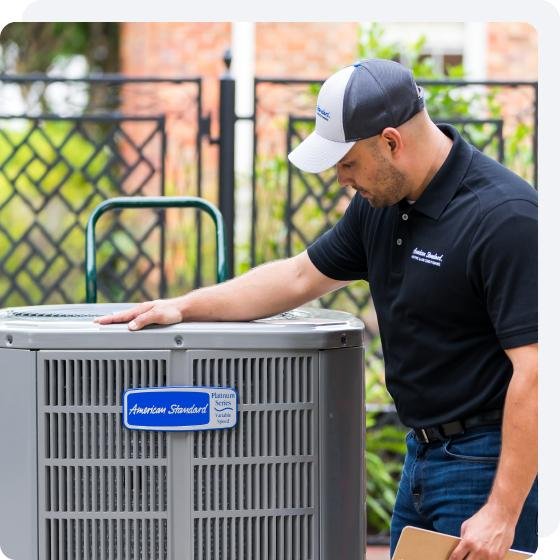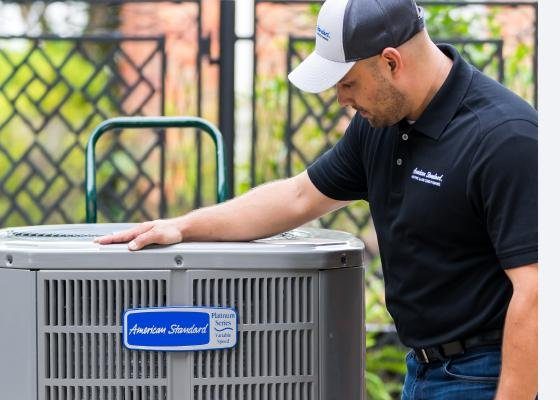
Here’s the thing about warranties—they’re promises, kind of like a safety net, that protect you against certain problems for a set time. But unlike casual promises, warranties come with rules about who can claim those repairs and when. So, transferring an American Standard HVAC warranty isn’t as simple as handing over the keys. Let me explain how it works, what you can expect, and why it matters if you’re the new custodian of one of these systems.
Understanding the Basics of an American Standard HVAC Warranty
American Standard offers some solid warranties on their HVAC units, designed to cover parts and sometimes labor for several years. Typically, their standard warranties last 5 to 10 years, depending on the model and registration. But here’s a key detail: these warranties are registered to the original owner at the time of installation.
Think of it like a gym membership—if it’s not transferred, the membership perks don’t automatically pass along to someone else. The warranty usually protects the first owner for a certain term and can sometimes be extended with registration or upgrades. But when ownership changes, the warranty’s status isn’t always so clear.
If you’re the new homeowner, you might find the warranty is still active but registered under the previous owner’s name. That means you can’t just call American Standard and expect a repair covered unless the warranty is officially transferred or it’s structured as a non-transferrable agreement.
Can You Transfer Warranty on an American Standard HVAC System?
Here’s the direct answer: American Standard warranties are typically non-transferrable. This means the warranty benefits usually end with the original owner. The company designed the warranty to cover the person who bought and registered the unit initially, not subsequent owners.
Why would this be? Well, warranties are often linked to the purchase contract and installation date. The manufacturer assumes responsibility for issues under certain conditions, but they also want to prevent warranty abuse or fraud by controlling who’s covered.
That said, some dealers or contractors might sell extended service contracts or transferable warranties, but these are exceptions rather than the rule. If you bought a unit new yourself, you’d have a clearer path to warranty service. But when you’re stepping into a used system, the warranty ride may already be over.
What Happens If the Warranty Isn’t Transferable?
Honestly, this can be a bit of a bummer if you’re hoping to save on repair costs. But here’s the thing: even without a transferable warranty, there are still steps to protect yourself.
First, you can check if the warranty is even still active. Some American Standard units come with registration forms or paperwork that might list warranty details. If you can get in touch with the previous owner, maybe they can help by transferring registration information or sharing copies of receipts.
Second, if the warranty has expired or can’t be transferred, you might want to consider a home warranty plan or an extended HVAC service contract. These are separate from the manufacturer’s warranty but can provide coverage on repairs for older systems.
Lastly, regular maintenance is crucial. A lot of repair issues come from wear and tear, dirt buildup, or neglected filters—not manufacturing defects. Keeping your American Standard system cleaned, serviced, and properly synced with your thermostat can stretch its lifespan and reduce costly breakdowns.
Example:
Let’s say you just moved into a house where the HVAC unit was installed three years ago. The original 10-year warranty is still active, but it’s in the previous owner’s name. Since it’s non-transferrable, you won’t get free parts or repairs under that warranty, but you can still schedule maintenance with an authorized dealer to keep things running smoothly.
How to Check Your American Standard HVAC Warranty Status
You might be asking, “How do I even know if the warranty’s still live?” It’s easier than you think. Here’s a quick rundown:
- Locate Your Model and Serial Numbers. These are usually found on the indoor unit’s side panel or outdoor condenser.
- Contact the Dealer or Installer. The place where the system was installed can often check warranty status using your serial number.
- Reach Out to American Standard Customer Support. They can provide warranty details if you give them the unit information.
Keep in mind, having these numbers handy also helps with troubleshooting, syncing your remote thermostat, or resetting the system when you’re dealing with error codes.
What Are Your Options If the Warranty Can’t Be Transferred?
Here’s where you get to take charge, even without warranty coverage. Think of it as taking your car in for regular oil changes rather than relying on a bumper-to-bumper warranty. You can:
- Sign Up for a Home Warranty Plan. Many companies offer plans that cover HVAC repairs, often at a reasonable monthly cost.
- Schedule Preventive Maintenance. Authorized HVAC technicians can spot trouble before it becomes expensive.
- Consider Repair or Replacement Costs. Sometimes, replacing an old system might be more cost-effective in the long run, especially if the unit isn’t energy-efficient.
When you’re deciding, keep in mind that American Standard units are known for reliability, but age and condition make a big difference.
Side Note: What About the Remote Control?
Oddly enough, your HVAC’s remote control can be a part of the experience that feels like a warranty issue—but it’s actually something else. If your remote isn’t syncing or showing error codes, that usually comes down to battery life or needing a reset or re-pairing with the system. These are simple fixes you can often do yourself. No warranty needed.
Why Does Warranty Transferability Matter?
You might be wondering why manufacturers don’t just allow warranty transfers—it feels fair, right? Here’s the thing: warranties are a form of risk management for companies. By limiting transfers, they can control fraud, ensure proper installation tracking, and keep repair standards high.
From a buyer’s perspective, a transferable warranty is like a seal of confidence. It signals the system is relatively new and cared for. Without that, you might approach repairs with a bit more caution and budget for potential expenses.
Still, some brands offer limited transferability or third-party extended warranties that can bridge this gap. Sadly, American Standard is usually pretty clear that their standard warranties don’t transfer.
How to Protect Yourself When Buying a Home With an American Standard HVAC System
If you’re house hunting or just got the keys, here’s some practical advice:
- Ask the Seller About the HVAC Warranty. They should provide any documentation or registration info.
- Get a Home Inspection. A professional can assess the HVAC system’s condition.
- Request Maintenance Records. Knowing if the system was regularly serviced helps predict future reliability.
- Consider Negotiating Repairs. If the warranty can’t transfer, you might ask the seller to fix or replace the unit before closing.
These steps help you avoid surprises and plan your budget realistically.
Wrapping It Up: What You Need to Know About American Standard HVAC Warranty Transfers
So, can you transfer warranty on an American Standard HVAC system to a new owner? The short and honest answer is usually no. American Standard’s warranties are generally non-transferrable, meaning they stay with the original registered owner. That might feel like losing a safety net, but all is not lost.
By understanding the warranty terms, checking your unit’s status, and maintaining your system, you can still enjoy reliable heating and cooling. Plus, alternative options like home warranties and preventive maintenance give you backup plans to keep your home comfortable without surprise costs.
Buying a home is a big step—and knowing the ins and outs of your HVAC warranty is just one part of making that place truly feel like yours.
